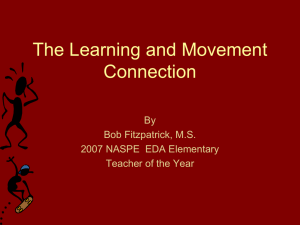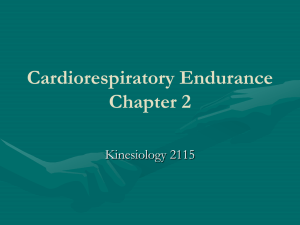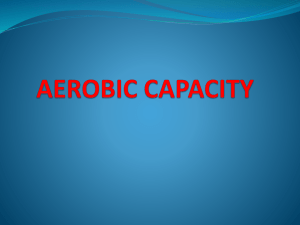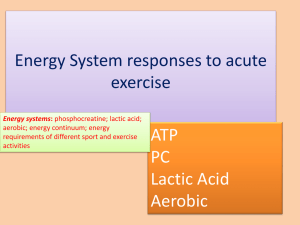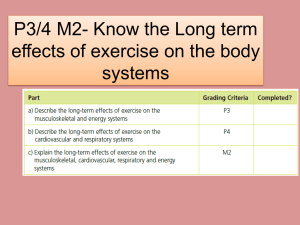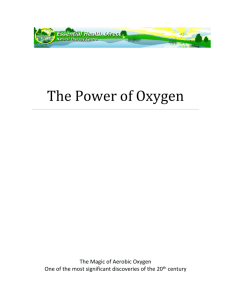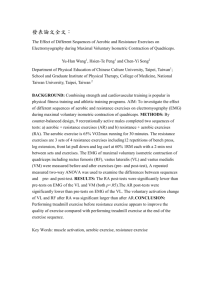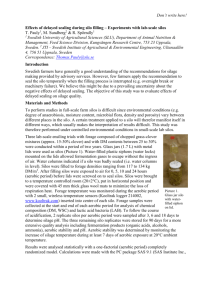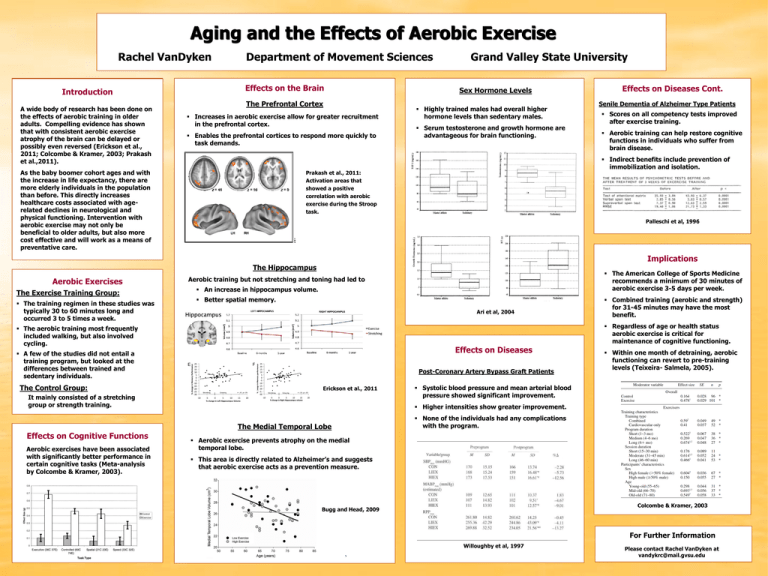
Aging and the Effects of Aerobic Exercise
Rachel VanDyken
Introduction
Introduction
The existence of domestic violence
A wide body of research has been done on
perpetrated against women over 50 years
the effects of aerobic training in older
of age is problematic in our society. It has
adults. Compelling evidence has shown
typically been seen as afflicting younger
that with consistent aerobic exercise
women (as cited in Leisey , Kupstas &
atrophy of the brain can be delayed or
Cooper, 2009). The review of studies
possibly even reversed (Erickson et al.,
done on domestic violece against women
2011; Colcombe & Kramer, 2003; Prakash
overand50
is farAbility
less extensive and available
Detraining
Functional
et
al.,2011).
As increase
functioning is directly
proportional to women
aerobic training,
it appears that
thaninresearch
for younger
(Straka
detraining has just as strong of relationship) found that after 1 month of detraining
&
Montminy,
2006).
the
baby
boomer
cohort
and with
gaitAs
speed
was back
to pre-training
levels
and abilityages
to ascend/descend
stairs had
alsothe
startedincrease
diminishing within
the first
month.
in life
expectancy,
there are
more
elderly individuals
in the
population
Researchers
and community
advocates
than
before. This
directly
increases
are becoming
aware
of the
reality of
healthcare
costs associated
withomen,
agedomestic violence
against older
related
declines
and they
expect in
it neurological
to increase asand
the
physical
functioning.
Intervention
baby boomer
cohort ages
(as citedwith
in
aerobic
exercise
may2006).
not only be
Straka &
Montminy,
beneficial to older adults, but also more
cost effective and will work as a means of
preventative care.
Department of Movement Sciences
Effects on the Brain
Grand Valley State University
Sex Hormone Levels
The Prefrontal Cortex
Increases in aerobic exercise allow for greater recruitment
in the prefrontal cortex.
Enables the prefrontal cortices to respond more quickly to
task demands.
Highly trained males had overall higher
hormone levels than sedentary males.
Serum testosterone and growth hormone are
advantageous for brain functioning.
The Exercise Training Group:
The training regimen in these studies was
typically 30 to 60 minutes long and
occurred 3 to 5 times a week.
Prakash et al., 2011:
Activation areas that
showed a positive
correlation with aerobic
exercise during the Stroop
task.
Implications
The American College of Sports Medicine
recommends a minimum of 30 minutes of
aerobic exercise 3-5 days per week.
Aerobic training but not stretching and toning had led to
An increase in hippocampus volume.
Better spatial memory.
Ari et al, 2004
Combined training (aerobic and strength)
for 31-45 minutes may have the most
benefit.
Regardless of age or health status
aerobic exercise is critical for
maintenance of cognitive functioning.
Effects on Diseases
Post-Coronary Artery Bypass Graft Patients
Hippocampal volume and spatial memory
Erickson et al., 2011
It mainly consisted of a stretching
group or strength training.
Within one month of detraining, aerobic
functioning can revert to pre-training
levels (Teixeira- Salmela, 2005).
Systolic blood pressure and mean arterial blood
pressure showed significant improvement.
Higher intensities show greater improvement.
None of the individuals had any complications
with the program.
The Medial Temporal Lobe
Aerobic exercises have been associated
with significantly better performance in
certain cognitive tasks (Meta-analysis
by Colcombe & Kramer, 2003).
Aerobic training can help restore cognitive
functions in individuals who suffer from
brain disease.
Socioeconomic Factors
A few of the studies did not entail a
training program, but looked at the
differences between trained and
sedentary individuals.
Effects on Cognitive Functions
Scores on all competency tests improved
after exercise training.
Palleschi et al, 1996
The aerobic training most frequently
included walking, but also involved
cycling.
The Control Group:
Senile Dementia of Alzheimer Type Patients
Indirect benefits include prevention of
immobilization and isolation.
The Hippocampus
Aerobic Exercises
Effects on Diseases Cont.
Aerobic exercise prevents atrophy on the medial
temporal lobe.
This area is directly related to Alzheimer’s and suggests
that aerobic exercise acts as a prevention measure.
Colcombe & Kramer, 2003
Bugg and Head, 2009
For Further Information
Willoughby et al, 1997
.
Please contact Rachel VanDyken at
vandykrc@mail.gvsu.edu

